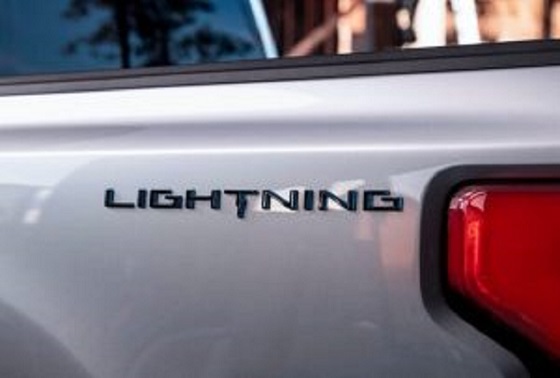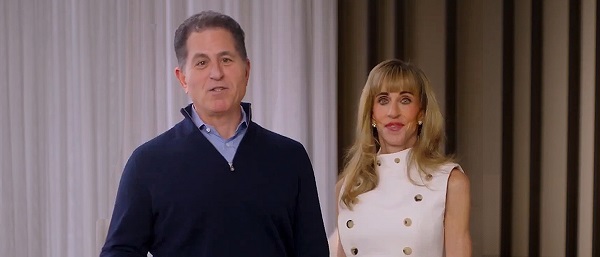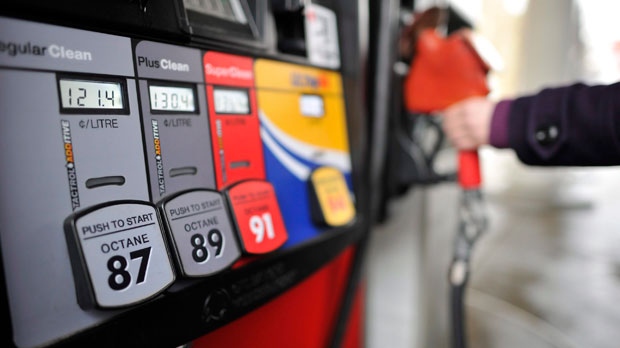Automotive
The Harsh Realities of Electric Vehicles in Canada

From EnergyNow.ca
By Lorne Gunter
When it comes to electric vehicles (EVs), the Trudeau government and Environment Minister Steven Guilbeault are putting the policy cart before the technology horse.
If last week’s extreme cold temperatures over most of the country taught us anything, it’s that EVs just aren’t practical (yet) for a country this big and this cold.
The federal Liberals may be willing to risk hundreds of billions of your tax dollars and mine for manufacturing subsidies, purchase subsidies and EV infrastructure to try to force a market for electrics into existence, but Canadians are just not ready to get rid of their internal combustion engines (ICEs). And with good reason.
I heard from a reader in northern Manitoba. He has a Ford Lightning (the fully electric version of the F-150 pickup). When the temperature fell to -40C last week, his truck’s range dropped by half after driving it just 18 kms. He was forced to abandon his work-related trip so he could return home before the charge ran out and he found himself stranded quite literally in the middle of nowhere without heat in the cab.
Another reader, this one from Edmonton, found that not only was his range severely reduced by the cold, but charging time was doubled. His wait at a public fast-charger was two hours instead of one because he had to keep the heat on in his Tesla.
Many charging stations across the country have also been reported to stop working in the extreme cold.
Since this is a country that experiences extreme cold (below -25C) most winters, that makes an EV an unacceptable risk, or at the very least a horrible inconvenience.
Also this week, the highly respected testing magazine, Consumer Reports, said that when temperatures are only as cold as +7C, EVs lose about 25% of their range compared to temperatures of +15C and a third when compared to temps of +25C.
Ranges, of course, are much further diminished when outside temperatures fall below -20C.
Environment Minister Steven Guilbeault says the upcoming Electric Vehicle Availability Standard will encourage automakers to make more battery-powered cars and trucks available in Canada. Automakers will have the next 12 years to phase out combustion engine cars, trucks and SUVs with a requirement to gradually increase the proportion of electric models they offer for sale each year. Dec. 19, 2023
Additionally, Consumer Reports (CR) found that “short trips in the cold with frequent stops and the need to reheat the cabin after a parking pause saps 50% of the range.” That means EVs may be impractical in Canada even for urban commuters or suburban families.
Late last year, CR also concluded EVs are 73% less reliable than gasoline vehicles. As well, they were more expensive to maintain and repair. And when the costs of electricity and home chargers are included, EVs are at least as expensive as gasoline vehicles to refuel.
That puts the lie to Guilbeault’s claim (made in December when announcing his mandate that all new vehicles be EVs by 2035) that while EVs are more expensive to buy, once consumers drive them off the lot, they become much more affordable than gasoline or diesel vehicles.
Not only are EVs more expensive to buy and maintain, because of their weight, they chew through tires about 40% faster. They are more expensive to insure because they cost so much more to repair if they are involved in an accident. They depreciate faster than ICEs. And their batteries lose up to half of their life in four or five years, even if they are fully charged.
All of this explains why car-rental giant, Hertz, announced earlier this month that it was selling its EV fleet – 20,000 cars. They are just too expensive.
Electric vehicles may not be that good for the environment, either.
Many components are, of course, manufactured in China (or by Chinese companies operating elsewhere) using electricity from coal-fired power plants. And this week, Blacklock’s Reporter revealed the federal Fisheries department is reviewing Northvolt, the Swedish battery maker building a heavily-subsidized plant in Quebec, for potential harm to fisheries, wetlands and streams.
The Liberals’ EV mandate is a very, very expensive farce that will likely produce few, if any, environmental benefits.
Automotive
Power Struggle: Governments start quietly backing away from EV mandates

From Resource Works
Barry Penner doesn’t posture – he brings evidence. And lately, the evidence has been catching up fast to what he’s been saying for months.
Penner, chair of the Energy Futures Institute and a former B.C. environment minister and attorney-general, walked me through polling that showed a decisive pattern: declining support for electric-vehicle mandates, rising opposition, and growing intensity among those pushing back.
That was before the political landscape started shifting beneath our feet.
In the weeks since our conversation, the B.C. government has begun retreating from its hardline EV stance, softening requirements and signalling more flexibility. At the same time, Ottawa has opened the door to revising its own rules, acknowledging what the market and motorists have been signalling for some time.
Penner didn’t need insider whispers to see this coming. He had the data.

Barry Penner, Chair of the Energy Futures Institute
B.C.’s mandate remains the most aggressive in North America: 26 per cent ZEV sales by 2026, 90 per cent by 2030, and 100 per cent by 2035. Yet recent sales paint a different picture. Only 13 per cent of new vehicles sold in June were electric. “Which means 87 per cent weren’t,” Penner notes. “People had the option. And 87 per cent chose a non-electric.”
Meanwhile, Quebec has already adjusted its mandate to give partial credit for hybrids. Polling shows 76 per cent of British Columbians want the same. The trouble? “There’s a long waiting list to get one,” Penner says.
Cost, charging access and range remain the top barriers for consumers. And with rebates shrinking or disappearing altogether, the gap between policy ambition and practical reality is now impossible for governments to ignore.
Penner’s advice is simple, and increasingly unavoidable: “Recognition of reality is in order.”
- Now watch Barry Penner’s full video interview with Stewart Muir on Power Struggle here:
Automotive
The high price of green virtue

By Jerome Gessaroli for Inside Policy
Reducing transportation emissions is a worthy goal, but policy must be guided by evidence, not ideology.
In the next few years, the average new vehicle in British Columbia could reach $80,000, not because of inflation, but largely because of provincial and federal climate policy. By forcing zero-emission-vehicle (ZEV) targets faster than the market can afford, both governments risk turning climate ambition into an affordability crisis.
EVs are part of the solution, but mandates that outpace market acceptance risk creating real-world challenges, ranging from cold-weather travel to sparse rural charging to the cost and inconvenience for drivers without home charging. As Victoria and Ottawa review their ZEV policies, the goal is to match ambition with evidence.
Introduced in 2019, BC’s mandate was meant to accelerate electrification and cut emissions from light-duty vehicles. In 2023, however, it became far more stringent, setting the most aggressive ZEV targets in North America. What began as a plan to boost ZEV adoption has now become policy orthodoxy. By 2030, automakers must ensure that 90 per cent of new light-duty vehicles sold in BC are zero-emission, regardless of what consumers want or can afford. The evidence suggests this approach is out of step with market realities.
The province isn’t alone in pursuing EV mandates, but its pace is unmatched. British Columbia, Quebec, and the federal government are the only ones in Canada with such rules. BC’s targets rise much faster than California’s, the jurisdiction that usually sets the bar on green-vehicle policy, though all have the same goal of making every new vehicle zero-emission by 2035.
According to Canadian Black Book, 2025 model EVs are about $17,800 more expensive than gas-powered vehicles. However, ever since Ottawa and BC removed EV purchase incentives, sales have fallen and have not yet recovered. Actual demand in BC sits near 16 per cent of new vehicle sales, well below the 26 per cent mandate for 2026. To close that gap, automakers may have to pay steep penalties or cut back on gas-vehicle sales to meet government goals.
The mandate also allows domestic automakers to meet their targets by purchasing credits from companies, such as Tesla, which hold surplus credits, transferring millions of dollars out of the country simply to comply with provincial rules. But even that workaround is not sustainable. As both federal and provincial mandates tighten, credit supplies will shrink and costs will rise, leaving automakers more likely to limit gas-vehicle sales.
It may be climate policy in intent, but in reality, it acts like a luxury tax on mobility. Higher new-vehicle prices are pushing consumers toward used cars, inflating second-hand prices, and keeping older, higher-emitting vehicles on the road longer. Lower-income and rural households are hit hardest, a perverse outcome for a policy meant to reduce emissions.
Infrastructure is another obstacle. Charging-station expansion and grid upgrades remain far behind what is needed to support mass electrification. Estimates suggest powering BC’s future EV fleet alone could require the electricity output of almost two additional Site C dams by 2040. In rural and northern regions, where distances are long and winters are harsh, drivers are understandably reluctant to switch. Beyond infrastructure, changing market and policy conditions now pose additional risks to Canada’s EV goals.
Major automakers have delayed or cancelled new EV models and battery-plant investments. The United States has scaled back or reversed federal and state EV targets and reoriented subsidies toward domestic manufacturing. These shifts are likely to slow EV model availability and investment across North America, pushing both British Columbia and Ottawa to reconsider how realistic their own targets are in more challenging market conditions.
Meanwhile, many Canadians are feeling the strain of record living costs. Recent polling by Abacus Data and Ipsos shows that most Canadians view rising living costs as the country’s most pressing challenge, with many saying the situation is worsening. In that climate, pressing ahead with aggressive mandates despite affordability concerns appears driven more by green ideology than by evidence. Consumers are not rejecting EVs. They are rejecting unrealistic timelines and unaffordable expectations.
Reducing transportation emissions is a worthy goal, but policy must be guided by evidence, not ideology. When targets become detached from real-world conditions, ideology replaces judgment. Pushing too hard risks backlash that can undo the very progress we are trying to achieve.
Neither British Columbia nor the federal government needs to abandon its clean-transportation objectives, but both need to adjust them. That means setting targets that match realistic adoption rates, as EVs become more affordable and capable, and allowing more flexible compliance based on emissions reductions rather than vehicle type. In simple terms, the goal should be cutting emissions, not forcing people to buy a specific type of car. These steps would align ambition with reality and ensure that environmental progress strengthens, rather than undermines, public trust.
With both Ottawa and Victoria reviewing their EV mandates, their next moves will show whether Canadian climate policy is driven by evidence or by ideology. Adjusting targets to reflect real-world affordability and adoption rates would signal pragmatism and strengthen public trust in the country’s clean-energy transition.
Jerome Gessaroli is a senior fellow at the Macdonald-Laurier Institute and leads the Sound Economic Policy Project at the BC Institute of British Columbia
-

 Business2 days ago
Business2 days agoRecent price declines don’t solve Toronto’s housing affordability crisis
-

 Censorship Industrial Complex1 day ago
Censorship Industrial Complex1 day agoA Democracy That Can’t Take A Joke Won’t Tolerate Dissent
-

 Daily Caller2 days ago
Daily Caller2 days agoTech Mogul Gives $6 Billion To 25 Million Kids To Boost Trump Investment Accounts
-

 Business2 days ago
Business2 days agoOttawa’s gun ‘buyback’ program will cost billions—and for no good reason
-

 MAiD18 hours ago
MAiD18 hours agoFrom Exception to Routine. Why Canada’s State-Assisted Suicide Regime Demands a Human-Rights Review
-

 Business2 days ago
Business2 days agoCanada’s future prosperity runs through the northwest coast
-

 Great Reset1 day ago
Great Reset1 day agoCanada’s MAiD (State Sanctioned Murder) Report Just Dropped
-

 Business1 day ago
Business1 day agoNew Chevy ad celebrates marriage, raising children










